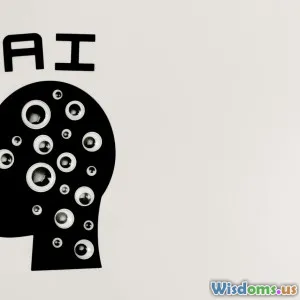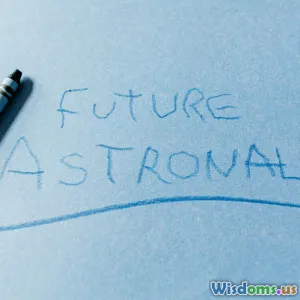
Making Science Fiction Reality: Dream Inspired Tech That Changed Lives
7 min read Explore groundbreaking tech inspired by dreams that turned science fiction into life-changing reality. (0 Reviews)
Making Science Fiction Reality: Dream Inspired Tech That Changed Lives
Introduction
From the earliest days of human imagination, science fiction has served as a beacon—both inspiring and challenging us to transcend the limits of our current reality. Concepts such as flying machines, intelligent robots, and instantaneous global communication once seemed confined to the pages of novels or the glow of cinema screens. Yet, the boundary separating fiction from fact has continuously shifted, often fueled by the quixotic dreams and visions of passionate innovators who dared to imagine the impossible.
Dreams have long been a wellspring of creativity and scientific insight. This article explores how some of the most revolutionary technologies that dramatically altered our daily lives originated from dreams or dream-like inspirations, transforming science fiction fantasies into tangible realities.
The Power of Dreams in Scientific Innovation
Dreams stimulate the subconscious mind beyond the confines of structured logic, fostering abstract thinking and novel solutions. Many inventors and scientists report breakthroughs emerging from vivid dreams or daydreams—moments when the mind reconfigures information to create new connections.
Case Study: Otto Lilienthal and Human Flight
Otto Lilienthal, often called the "Glider King," drew inspiration from the mechanics of bird flight seen during trance-like observations. Though not a direct dream, his meticulous mental visualizations converged with an imaginative vision for controlled flight. His pioneering work laid the foundation for the Wright brothers, who famously credited intense visualization and experimentation—efforts intertwined with subconscious processing—for their success in powered flight.
Example: Elias Howe and the Sewing Machine
Elias Howe conceived the lockstitch sewing machine needle after dreaming of being attacked by warriors wielding spears pierced with holes near their tips. This dream sparked the innovation necessary to design a needle with the eye near the point, radically improving sewing technology.
Dreaming in the Age of the Digital Revolution
With modern technology, the translation of dream-inspired ideas into functioning devices has accelerated dramatically.
Neural Networks and Artificial Intelligence
Artificial intelligence started as visionary and, until recently, purely fictional concepts about machines that think. Neural networks—algorithms modeled loosely after human brain structures—have roots in researchers’ attempts to mimic human cognition, an effort inspired largely by an expansion of introspective and dream-based understanding of how our minds work.
The rise of AI technologies like GPT models, facial recognition, and autonomous vehicles reveals how ideas that once lived only in dreams or imagination-based fiction now power everyday life across industries, enhancing productivity and enabling unprecedented human-computer collaboration.
Touchscreen Technology and Minority Report Futures
The futuristic touchscreen, reminiscent of interfaces popularized by films like "Minority Report," emerged from research informed not only by scientific progress but also by human cognitive approaches to touch and visualization. Early touchscreens pioneered in the 1960s and 70s unveiled physical interactions that echoed filmic dreams of intuitive control panels, now ubiquitous in smartphones, tablets, and kiosks worldwide.
Virtual Reality: Living the Sci-Fi Dream
Virtual Reality (VR) realizes the immersive environments dreamt about within sci-fi narratives. Its development was motivated by a desire to replicate dreams’ vivid spatial awareness digitally, generating endless applications from gaming and education to medical therapy and remote work.
Inspirations Beyond Technology: Ethics and Society
While technology inspired by dreams has enriched lives and solved critical challenges, it also compels us to pause and reflect on ethical implications. AI biases, data privacy concerns from ubiquitous touch and voice interfaces, and VR’s psychological effects present complex social issues requiring thoughtful stewardship.
Quotes from pioneers like Steve Jobs remind us: “Creativity is just connecting things.” However, the connections we forge between dreams and technology bear significant responsibility. We must shape innovation with wisdom to ensure a future where such creations empower inclusive, ethical progress rather than unintended harm.
Conclusion
Throughout history, dream-fueled imagination has served not only as escapism but as the crucible where science fiction transforms into groundbreaking technology that reshapes lives. From the invention of flight to the rise of AI and beyond, countless inventions have their roots in visionary dreams—be they subconscious revelations or conscious deliberate visualizations.
Recognizing the value of our dreams encourages us all to nurture creativity and aspire toward innovation. In embracing the symbiosis of science fiction and real-world invention, we unlock possibilities that push human potential ever further. The bridge between dreams and reality isn’t just a poetic notion—it’s a proven engine of transformative change.
As we stand on the cusp of new breakthroughs, perhaps the most profound lesson is this: our dreams today are the seeds of tomorrow’s realities. By listening to and acting upon them thoughtfully, we continue to make science fiction not only believable but lived.
References:
- "The Dream and the Underwater Light" by Richard V. Kadison
- Frederick P. Brooks Jr., "The Mythical Man-Month: Essays on Software Engineering"
- "AI: A Very Short Introduction" by Margaret A. Boden
- Otto Lilienthal’s biography and flight experiments, Smithsonian Air and Space Museum archives
- Elias Howe’s patent history, United States Patent Office
- "Steve Jobs" by Walter Isaacson
Rate the Post
User Reviews
Popular Posts



















